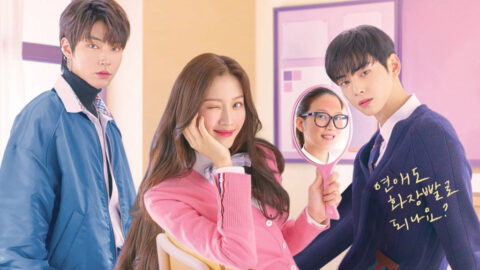
Something that makes me happier to watch K-dramas is the sense of belonging that we all share through our fondness for them. That said, I often run into others who fault K-dramas for relying on tropes. I contend that creators deliberately choose to use tropes. You see, employing them—recurrent themes, plot devices, and character archetypes—in K-dramas is their biggest selling point; they are essential to the way we like them.
Tropes, I’d say, form the basis of a narrative—quick cuts for information delivery to the audience, which facilitates their interpretation and emotional connection to the story. If you look at how tropes came to be, there’s a rich history deeply ingrained in literary tropes. Over time, narrative genres have used tropes that have evolved and been adapted to fit a wide range of cultural settings. From the famous Greek mythological figures to the stock characters of Commedia dell’Arte, tropes have played a role in creating stories and captivating viewers.
Tropes may vary from the “rich and conceited CEO” to “haters to lovers,” “the Cinderella trope,” “love triangle,” “friends to lovers,” “contract marriage,” and even the “poor but compassionate protagonist” in the context of K-dramas. Often used to keep us engaged, these popular characteristics and plot points have become genre mainstays. K-dramas give us a sense of comfort by using these cliches to induce predictability, which gives us a sense of comfort.
If one digs further into the trope universe, one finds a plethora of subcategories and categories, all with distinct functions in narrative. Character clichés like “the role model” and narrative tropes like “the hero’s journey” equip storytellers with an abundance of resources for crafting vivid and impactful stories. Understanding the complexities of many tropes allows makers to upend expectations, breathe fresh life into classic stories, and connect with audiences in unexpected ways.
Tropes are of the utmost significance and serve several purposes in storytelling. Firstly, they aid in giving a drama a feeling of consistency and coherence. K-dramas create an underlying framework that directs the narrative flow through familiar tropes. Because of this framework, we can more easily follow along with the story and anticipate specific character arcs and plot developments. Plus, tropes are a type of cultural currency, reflecting social conventions, values, and beliefs. Recursive tropes, in my opinion, enable stories to address present-day issues, dispel myths, and offer nuanced viewpoints on difficult subjects.
K-drama tropes are prevalent in multiple themes and genres. Whether it’s a heartwarming romance or a thrilling mystery, there are common tropes in each. Some of these in K-dramas include the “love triangle,” where the protagonist must choose between two lovers, and the “childhood connection,” in which characters who knew each other as children reunite as adults.
Another popular K-drama trope is the “rich/poor divide,” where characters from various socioeconomic origins overcome the hardships of their disparate environments while finding common ground in their relationships. This trope frequently delves into themes of class discrepancy, personal growth, and the power of love to overcome societal obstacles.
K-drama tropes have evolved over the years. While some tropes—such as “haters to lovers”—have endured over time, others—such as “friends to lovers”—are changing to reflect our changing tastes. This variation prevents the genre from becoming dull or stale and keeps it entertaining. A good example of this could be the coming-of-age drama Twenty-Five Twenty-One (2022), which did in part follow the trope but did not end in a predictable way, which was a surprise. But we did love it, didn’t we?
So, this willingness to adapt and reinvent classic tropes ensures that K-dramas remain a dynamic and engaging form of entertainment for us.
The basic elements of human perception and emotion provide the psychology behind our love of tropes. We tend to look for patterns and draw connections, as I learned when I dug more into the psychology of tropes. Using their recurrent themes and character archetypes, tropes leverage this intrinsic cognitive mechanism, furnishing narrative structure and predictability. This cognitive ease makes it simple for us to comprehend the plot and enjoy seeing patterns that we are accustomed to.
The comfort that comes with familiarity is one of the main reasons that tropes are appealing. K-dramas set up a scene that is relatable via tropes. We become used to and feel connected when specific storylines and character arcs are reproduced. It is a haven in an ever-changing society.
And it’s not just feeling connected that makes tropes reassuring. It’s also a healing emotional shield. Popular tropes bring back memories and feelings connected to stories that are comparable to our own. This emotional resonance makes us far more invested in them, and it fosters a deep feeling of empathy and connection with them and their characters.
It’s interesting to see how various dramas reinterpret and twist established tropes to add suspense and variance. K-drama tropes’ play of surprise and predictability reflects the complexity of human emotions. Tropes, like real life, provide a balancing act between the expected and the unexpected, and we remain inquisitive as to how they will be reimagined or reinvented in each new drama.
K-drama tropes are quite significant in revealing Korea’s diverse cultural heritage. They are symbolic items that highlight Korea’s habits, customs, and fundamental truths. By infusing these cultural factors into the narratives, K-dramas are a vehicle for interaction between cultures as well.
Thus, K-drama tropes must exist. Their cohesiveness, relatability, and emotional engagement serve as the cornerstones of storytelling. The logic underpinning our appreciation of tropes stems from both the ease of routine and the thrill of novelty. Tropes are also useful for reasons beyond entertainment, such as appealing to viewers across the globe and fostering cross-cultural exchange. Put simply, they stay at the forefront of what makes K-dramas so popular as a storytelling form.
The post The Significance of K-Drama Tropes appeared first on Rolling Stone India.
